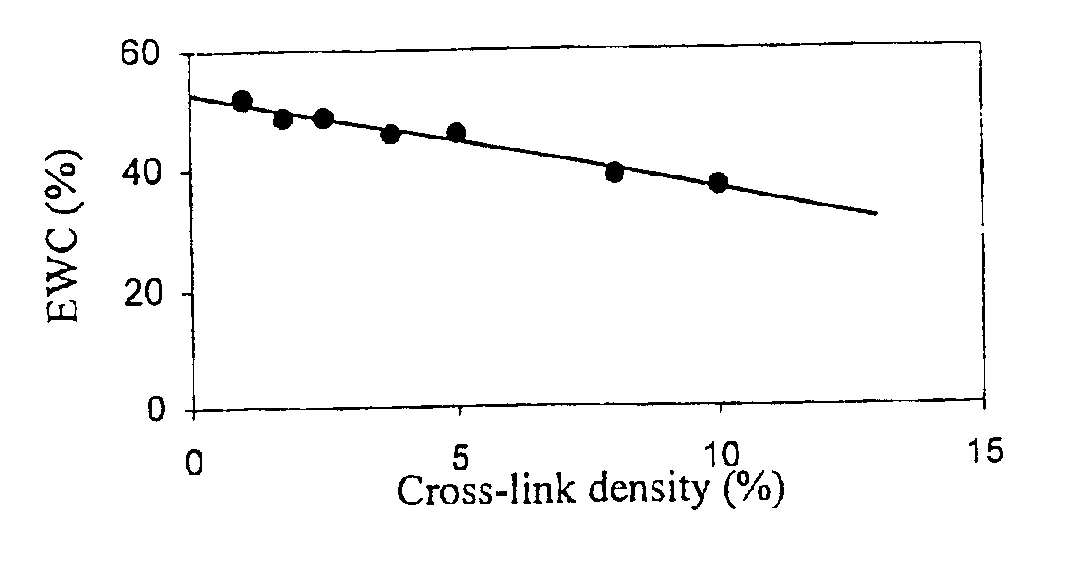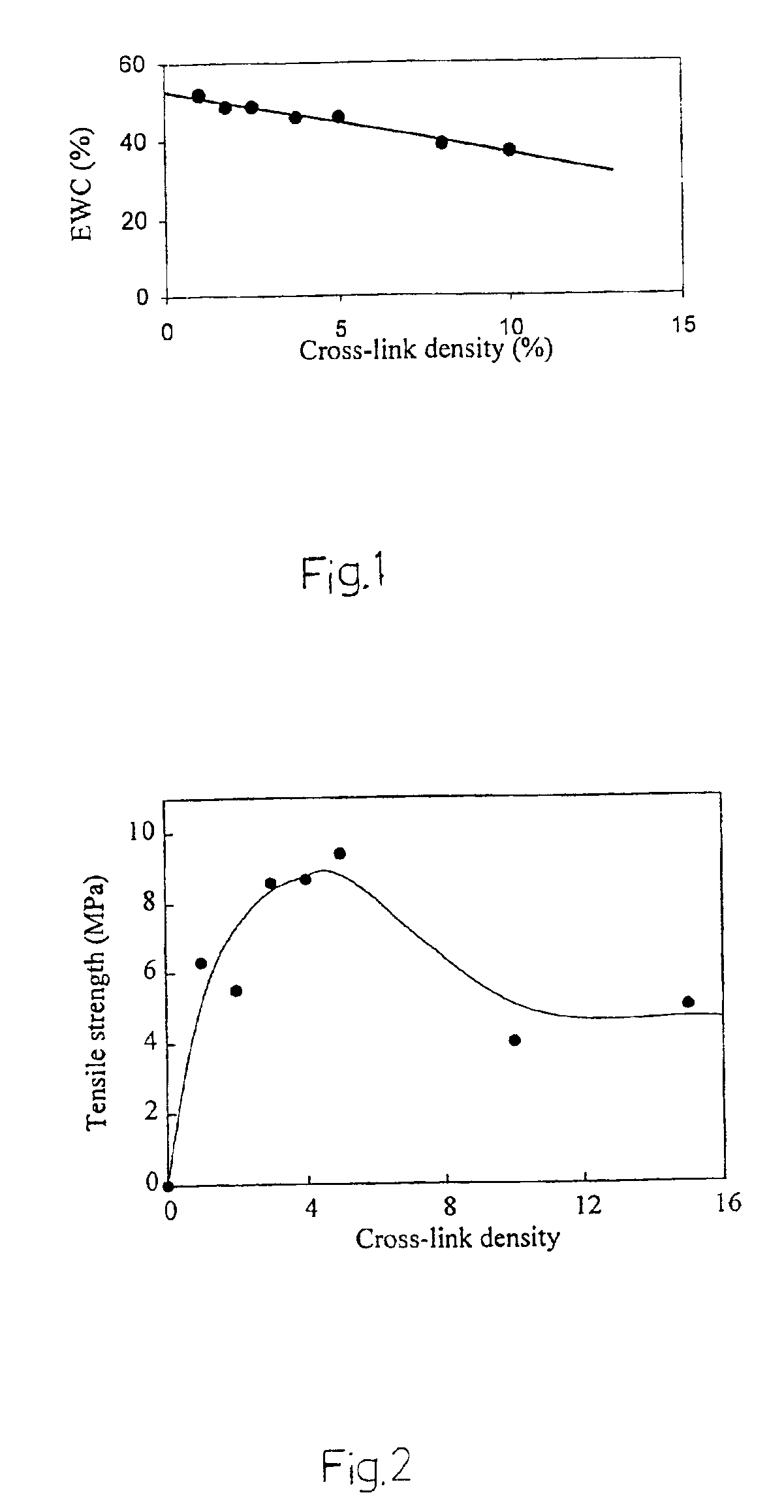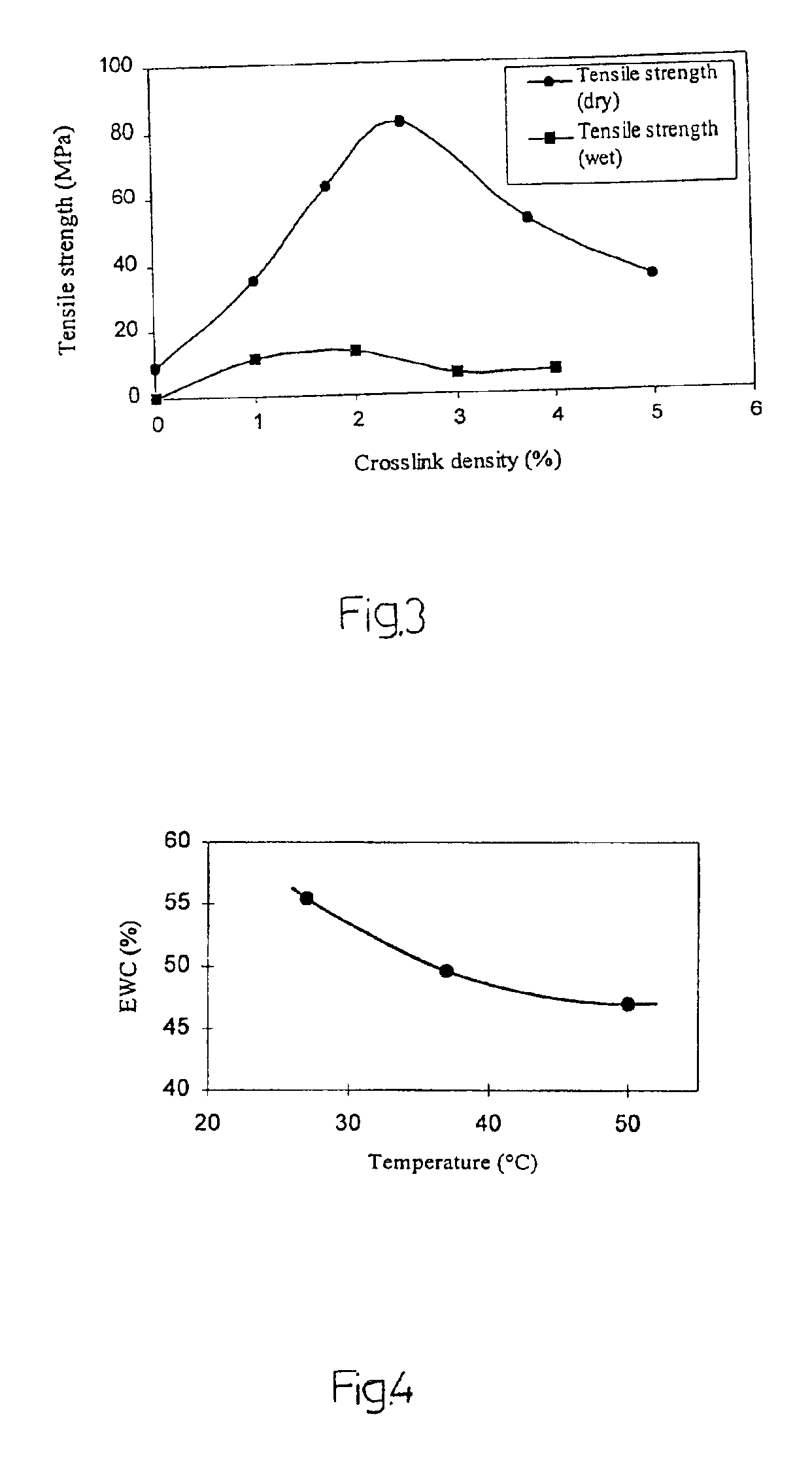Hydrogels and methods for their production
a technology of hydrogels and gels, applied in the field of hydrogels and methods for their production, can solve the problems of hydroxyethylmethacrylate, their brittleness, and the high elasticity modulus of conventional hydrogels as medical implants
- Summary
- Abstract
- Description
- Claims
- Application Information
AI Technical Summary
Benefits of technology
Problems solved by technology
Method used
Image
Examples
Embodiment Construction
The present invention refers to new hydrogels with improved mechanical characteristics that makes them highly applicable as implants in the human body. In this context hydrogel is defined as a polymer composition that is swellable in water to an equilibrium value. Such a polymer composition comprises a network of a hydrophilic polymer. A network of a hydrophilic polymer typically means that crosslinks are formed between polymer chains by covalent bonds or by physical bonds, e.g. hydrogen bonds. A hydrophilic polymer according to the present invention is defined as a polymer capable of swelling in water, however, not being soluble in water. The hydrophilic polymer is generally described to have a carbon to carbon backbone —(C—C—C—C)n— to which functional groups having an active hydrogen are attached so the polymer is provided with hydrophilic characteristics and points for crosslinking. According to a highly preferred aspect of the present invention, the functional groups are hydroxy...
PUM
| Property | Measurement | Unit |
|---|---|---|
| tensile strength | aaaaa | aaaaa |
| tensile strength | aaaaa | aaaaa |
| equilibrium water content | aaaaa | aaaaa |
Abstract
Description
Claims
Application Information
 Login to View More
Login to View More - R&D
- Intellectual Property
- Life Sciences
- Materials
- Tech Scout
- Unparalleled Data Quality
- Higher Quality Content
- 60% Fewer Hallucinations
Browse by: Latest US Patents, China's latest patents, Technical Efficacy Thesaurus, Application Domain, Technology Topic, Popular Technical Reports.
© 2025 PatSnap. All rights reserved.Legal|Privacy policy|Modern Slavery Act Transparency Statement|Sitemap|About US| Contact US: help@patsnap.com



